Connecting your Obdii Wifi Interface to the Car Scanner app is a straightforward process, allowing you to diagnose your vehicle wirelessly. This guide will walk you through the simple steps to establish a connection and start using the Car Scanner app with your OBDII wifi adapter.
Step 1: Connect to the OBDII WiFi Network
First, ensure you have an OBDII ELM327 adapter with WiFi capabilities. Locate the diagnostic socket, usually found under the dashboard of your car, and plug in the adapter. Turn your car’s ignition to the “ON” position or start the engine to power the adapter. If your adapter has a power button, make sure it is switched on.
Now, on your smartphone or tablet, navigate to the WiFi settings. Do not open the Car Scanner app settings yet. Turn on WiFi on your device.
Your OBDII WiFi adapter will create its own WiFi network. Search for available WiFi networks and look for one that is typically named “OBDII”, “OBD2”, “WIFI_OBDII”, or something similar. Brands like VGate might have network names like “VLINK”. If your adapter came with documentation, it might specify the exact network name and password if required. Connect to the WiFi network created by your OBDII adapter. It’s important to note that this network name will never be related to your car brand.
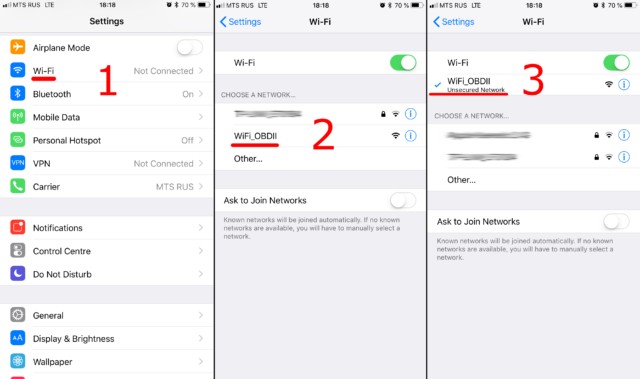 Connecting to OBDII Adapter WiFi Network on iOS and Android
Connecting to OBDII Adapter WiFi Network on iOS and Android
Step 2: Configure the Car Scanner App for OBDII WiFi
Once your device is connected to the OBDII adapter’s WiFi network, open the Car Scanner app. Look for the “Settings” icon, typically a gear icon located in the top-right corner of the app’s main screen, and tap on it.
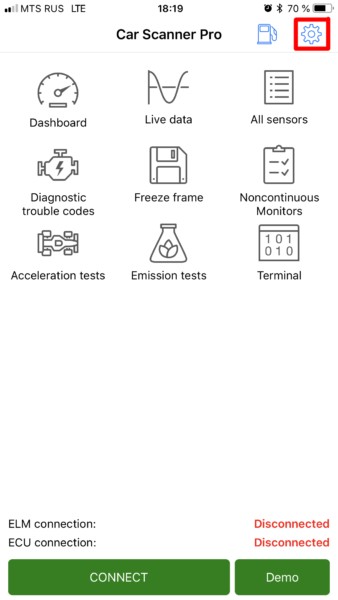 Accessing Car Scanner App Settings
Accessing Car Scanner App Settings
In the Settings menu, find and tap on the “Adapter” option. In older versions of the app, this might be labeled “Connection”.
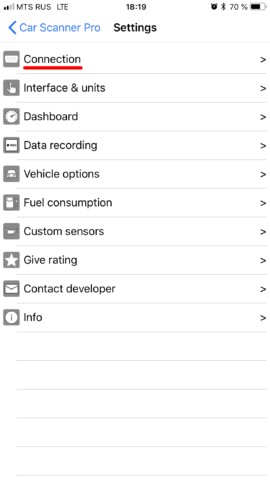 Selecting Adapter Settings in Car Scanner App
Selecting Adapter Settings in Car Scanner App
Within the Adapter settings, you will see different connection types. Select “Wi-Fi” as your connection method.
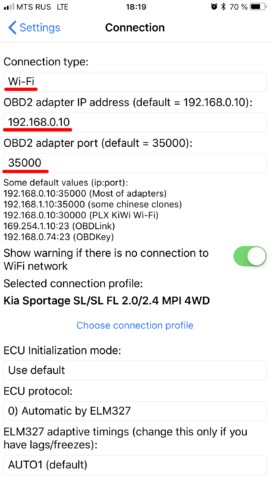 Choosing WiFi Connection Type for OBDII Adapter
Choosing WiFi Connection Type for OBDII Adapter
Verify the “IP address” and “Port” settings for your WiFi connection. For most OBDII WiFi adapters, the default IP address is 192.168.0.10 and the port is 35000. However, some adapters may use different settings. Always refer to the documentation that came with your specific OBDII WiFi interface to confirm the correct IP address and port number if the connection fails.
Step 3: Connect and Start Scanning
With the WiFi connection configured in the Car Scanner app, return to the main screen of the app. You should see a large green “Connect” button. Tap this button to initiate the connection between the Car Scanner app and your OBDII WiFi interface.
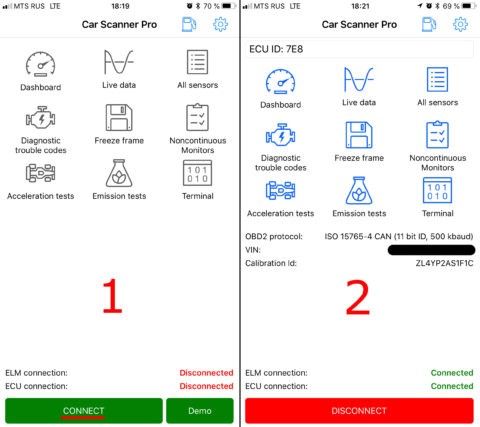 Connecting to OBDII WiFi Interface in Car Scanner App
Connecting to OBDII WiFi Interface in Car Scanner App
The app will now attempt to establish a connection with your car’s computer through the OBDII WiFi adapter. Once connected, you can start using the Car Scanner app to read diagnostic trouble codes, monitor live data, and perform other diagnostic functions.
For subsequent uses, ensure your device is connected to the OBDII WiFi network again and simply tap the “Connect” button in the Car Scanner app. If you encounter any issues, double-check your WiFi connection to the adapter and the IP address and port settings in the Car Scanner app, and consult any troubleshooting information provided with your OBDII WiFi interface.

